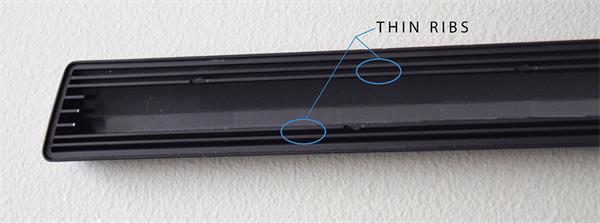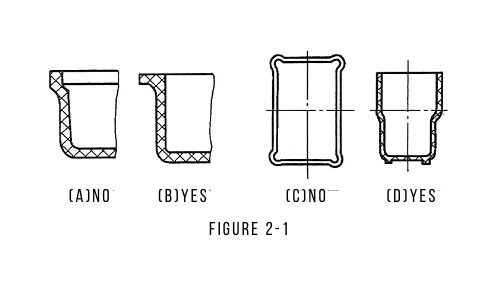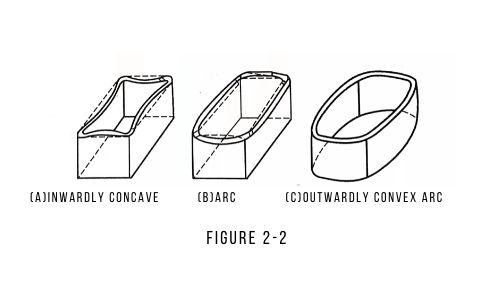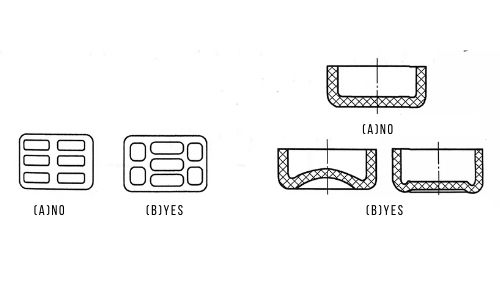
When designing plastic parts, the problems encountered in production should be prevented in advance according to their shape. Avoid wasted time and cost. There are 4 guidelines for self-testing.
1.The plastic part is a large and thin plane, and it is necessary to design enough reinforcing ribs.
Large and thin flat plastic parts are not strong enough and are easily deformed. Designing ribs can avoid these problems at the same time. As the picture shows.

2.The side wall of the box-shaped thin-walled container is concavely deformed.
When the box-shaped thin-walled container is made of ABS or PP. The sidewall is prone to concave deformation after injection molding. As shown in figure 2-1(A) and figure 2-1(C).
1)In order to enhance rigidity and reduce deformation, the edge portion of the opening of the thin-walled container is designed to have a curved structure. As shown in figure 2-1(B) and figure 2-1(D).
2)As show figure 2-2(B)and(D)Each side of the side wall is designed to have an outwardly convex curved structure to effectively prevent deformation.
3)Some plastic parts are designed to be rectangular. When designing the mold, the core and cavity can be changed to an outwardly curved shape.


3.When designing plastic parts, pay attention to the deformation of the bottom of the part.
For large housing plastic parts. Due to the anisotropy of the plastic, deformation is easily generated. In order to reduce the deformation, reinforcing ribs can be designed.
The reinforcing ribs should be staggered. As shown in Figure 3-1 (b). It can also be made into a spherical or shaped curved structure. As shown in Figure 3-2 (b).

4.The top surface of the plastic piece has a miniature or dent.
When designing the mold, pay attention to the height of the core. Avoid making the wall thickness of the molded hole of the product too thin. The injection pressure is high and the miniature is smaller.
At the end
Pay attention to details when designing plastic parts. A reasonable design can save a lot of unnecessary trouble.
